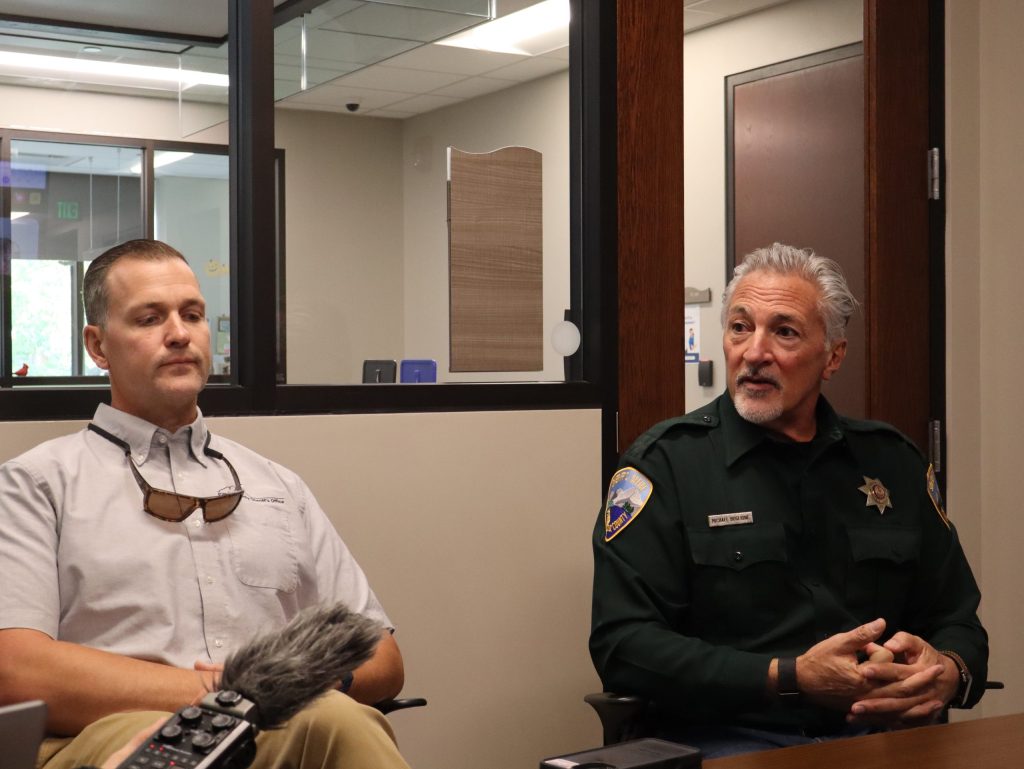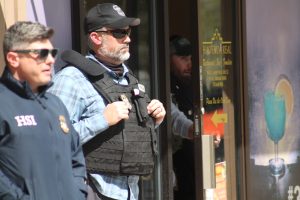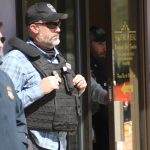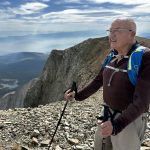Authorities give insight into review of Hunter S. Thompson’s death
Colorado Bureau of Investigation conducting review at request of Thompson’s widow

Lynn Goldsmith/Courtesy photo
The Colorado Bureau of Investigation is reviewing the 2005 death of famed author and journalist Hunter S. Thompson at the request of Thompson’s widow.
Anita Thompson, who survives the late Aspen journalist, went to Pitkin County Sheriff Michael Buglione earlier this year with new concerns about the death of her husband.
On Feb. 20, 2005, Hunter Thompson died of “an alleged self-inflicted gunshot wound to the head” at his residence in Woody Creek, which the original investigation concluded was a suicide, according to a press release published on Tuesday by the Colorado Bureau of Investigation.
Buglione told reporters on Wednesday the concerns were not about the original investigation, “as much as things that she’s (Anita Thompson) been hearing from, say, friends and possibly relatives about Hunter’s demise.”
He said that when speaking with Anita Thompson, it was difficult to understand the exact concerns as she was speaking to him so quickly.
“She’d just found out something that is life changing for her,” he said.
On July 31, Anita Thompson and the sheriff met with the CBI, who agreed to review the case at her request, “to see if there’s any inconsistencies in our original report in 2005,” Buglione said.
He had suggested they take the case to CBI to get a new perspective on the information, as the Pitkin County Sheriff’s Office had conducted the original investigation.
“The Sheriff’s Office has been confident over the last 20-plus years that the original investigation was exactly what happened,” he told reporters. “We’re still confident that that is the case.”
Buglione said CBI reinterviewed Anita Thompson about the death of her husband but doesn’t know other details of their review. If CBI finds inconsistencies between their review and the original investigation, Anita Thompson would have the option to reopen the case, which would prompt CBI to look for new evidence into Hunter’s death. CBI’s press release stated there is no firm deadline for completion of the review.
“We understand the profound impact Hunter S. Thompson had on this community and beyond,” Buglione said in the Tuesday release. “By bringing in an outside agency for a fresh look, we hope to provide a definitive and transparent review that may offer peace of mind to his family and the public.”

CBI told The Aspen Times on Wednesday they have “nothing more to say beyond what was in the news release,” regarding the case review.
According to the original incident report of Hunter’s death, Pitkin County Deputy John Armstrong responded on Feb. 20, 2005, to a call of a shooting at 1278 Woody Creek Road, at approximately 5:50 p.m.
“Communciations said that they were told that Dr. Hunter S. Thompson, the well-known writer and journalist, had fatally shot himself,” Armstrong wrote in the report.
Juan Thompson, Hunter’s son, had reported the shooting, according to the report.
“I arrived at the residence at approximately 18:00 hours, and as I drove into the driveway, I heard 3 shots ring out,” Armstrong wrote.
Armstrong saw a man exit the main house, who identified himself as Juan Thompson.
“Juan told me that he had shot a shotgun into the air to mark the passing of his father,” Armstrong wrote.
Juan ensured Armstrong it was safe to enter the home, and that his wife, Jennifer, and son, William, were the only other ones in the residence. Juan told Armstrong nobody else was injured.
“Juan told me that his father had shot himself,” Armstrong wrote. “Juan said he had been in the living room next to the kitchen where his father was. I asked Juan if he heard the shot. Juan said he had heard a dull sound, not a sharp crack typical of a gunshot.”
Juan told Armstrong he had heard the shot about 20 minutes before Armstrong arrived on scene.
“Juan led me through the living room where I saw the shotgun on the floor,” Armstrong wrote. Armstrong moved the shotgun into the next room to not leave it unattended.
Juan then led Armstrong into the “combination kitchen/office of Dr. Hunter Thompson.”
“I saw Dr. Thompson sitting in a chair at his desk by the kitchen stove. Dr. Thompson was sitting upright in the chair but his head was faced down, chin on his chest,” Armstrong wrote, noting there was blood emanating from Hunter Thompson’s mouth and no evidence he was breathing.
He detected no pulse on Hunter’s left hand but found his hand to have grey substance on it the color of pencil lead.
“Juan Thompson told me that he thought his father had used a .357 handgun to kill himself,” Armstrong wrote. “I saw a handgun on the floor at the right foot of Dr. Thompson. I also saw a handgun case with a lot of blood on it, which was partially covering the gun. There was another gun on a shelf to the right of Dr. Thompson’s chair.”
A medic on the scene determined that Hunter was dead. Based on the injuries and the impact of the slug in the stove hood behind the writer, Armstrong judged that Hunter had put the gun in his mouth and fired it.
Armstrong told his theory to Pitkin County Coroner Dr. Steve Ayers, who had arrived on the scene.
Pitkin County Sheriff’s Office Investigator Ron Ryan, who had also arrived at the scene, determined there were no cartridges left in the chamber of the Smith & Wesson .45 caliber handgun found. He also found one handgun magazine, one spent shell casing, one slug, and one fabric handgun case.
Dr. Ayers told The Aspen Times on Wednesday that, at the time, he did not do a toxicology report on Hunter.
“I knew it was not going to change anything about the cause or manner of death,” he said. “And honestly, our standards are different these days, but at the time, I felt it was just going to be fodder for the press and for conspiracy theories and all kinds of things, and so I didn’t do it for that reason.”
Otherwise, he said he could not comment, as CBI is actively reviewing the case.
“There’s no smoking gun here,” he said.

Support Local Journalism

Support Local Journalism
Readers around Glenwood Springs and Garfield County make the Post Independent’s work possible. Your financial contribution supports our efforts to deliver quality, locally relevant journalism.
Now more than ever, your support is critical to help us keep our community informed about the evolving coronavirus pandemic and the impact it is having locally. Every contribution, however large or small, will make a difference.
Each donation will be used exclusively for the development and creation of increased news coverage.









